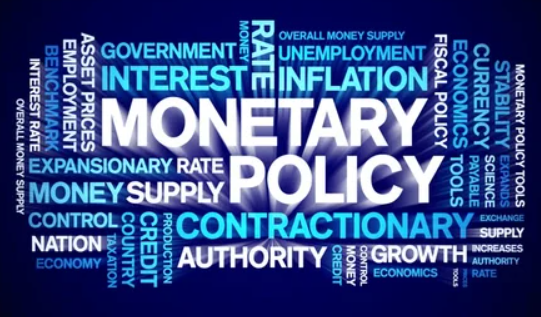Loan Recast – An Analysis of the KV Kamath Committee Report
The Indian economy had been showing signs of slowdown over the past
couple of years. Further, the prolonged lockdown to arrest the spread of the
COVID-19 pandemic severely affected the functioning of businesses and
industries. The combination of both these factors has impacted the
profitability and consequently the cash flows of organizations giving rise to
the specter of another spike in the NPAs of banks.
The Reserve Bank of India at its meeting held on 7th August 2020 took note of
this situation and announced a scheme for One Time Restructuring of Loans
without classifying them as NPAs.
Salient features of the scheme were:
1. Boards of lending institutions to come up with approved policies to implement viable resolution plans.
2. The Policy would lay down eligibility criteria and due diligence considerations to be followed.
3. Corporate debt restructuring may also take the route of converting debt to equity.
The Committee
The RBI simultaneously constituted a committee headed by Mr. KV Kamath, former Chairman, of ICICI Bank Ltd to go into the issue of Loan Recast. The other members of the committee were Mr. Diwakar Gupta, Mr. TN Manoharan, Mr. Sunil Mehta, and Mr. Ashwin Parekh. The brief to the committee was:
· To identify suitable financial parameters that should be factored into the assumptions underlying Resolution Plan (RP) finalized by the lending institutions under the Resolution Framework. The parameters shall cover aspects related to leverage, liquidity, debt serviceability, etc.
· To recommend sector-specific ranges for such financial parameters that will serve as boundary conditions for the RP.
· To make any other recommendations relating to financial or non-financial conditions to be considered for the RP within the contours of the framework announced by the Reserve Bank of India.
The committee went about its task initially by holding extensive and
in-depth discussions with lenders, rating agencies, and representatives of
various Industry Associations to identify the sectors that are under severe
stress and get the sector-wise numbers for the last two quarters. To evolve and
frame watertight rules for the restructuring it went back to the roots of
banking and drew upon the hands-on experience, acquired by the members over the
decades.
The Recommendations
A few of the important recommendations are mentioned below:
· The committee identified 26 sectors that have been under stress. These are Power, construction, iron and steel manufacturing, roads, real estate, wholesale trade, textiles, chemicals, consumer durables/FMCG, non-ferrous metals, pharma, logistics, gems and jewelry, cement, auto components, hotels, mining, plastic products manufacturing, automobile manufacturing, auto dealership, aviation, sugar, port and port services, shipping, building materials, and corporate retail outlets.
· Sectors that remained unaffected pre- and post-Covid were categorized as mild. Sectors that were affected post-Covid were categorized as moderate while sectors that were affected both pre- and post-Covid were categorized as severe.
· A total of 1027 firms with a combined gross debt of Rs 29 lakh crores are eligible for debt restructuring.
· Only standard assets, that is, loans that are not overdue beyond 30 days as of March 1, 2020, will be eligible for restructuring.
· Critical ratios relating to borrowers’ solvency, liquidity, and coverage need to be investigated while finalizing the resolution plan. The ratios to be considered are:
i) Total Outside liabilities/Adjusted Tangible Net Worth
ii) Total Debt/EBITDA
iii) Current Ratio
iv) Debt Service Coverage Ratio
v) Average Debt Service Coverage Ratio
Sector-specific thresholds have been fixed by the committee for each of the above ratios keeping in mind the operational variables. For sectors other than the 26 listed above, ratios and the threshold can be decided by the banks on an individual basis.
· The Resolution Plan must be based on the borrowers’ pre-Covid operating and financial performance, and the impact of Covid on its operating and financial performance in Q1 and Q2 FY21, and subsequent years to assess the cash flows for FY 21 and FY22 and beyond. The plan should also indicate a time-bound turnaround plan.
· Base case financial projections need to be prepared as part of the Resolution Plan.
· In respect of the resolution plan for borrowers with loans over Rs 1500 crores, the committee shall check and verify that all processes have been followed by the parties concerned as desired without interfering with the commercial judgments exercised by the lenders.
· For borrowers who have been sanctioned loans by a consortium of lenders, approval of 75% of lenders by value and 60% of lenders by numbers is needed. In all such cases, Inter Creditor Agreement (ICA) is mandatory. Any default by the borrower with any of the signatories to the ICA during the monitoring period shall trigger a review period of 30 days. If the borrower is in default with any of the signatories to the ICA at the end of the review period, the asset classification of the borrower with all the lending institutions including those who did not sign the ICA shall be downgraded to NPA from the date of implementation of the plan or the date from which the borrower had been classified as NPA before implementation of the plan, whichever is earlier.
· Ratios need to be maintained in all cases as per plan by March 2022. However, whenever there is an infusion of equity the ratio may be suitably phased in over the period. All other key ratios must be maintained as per the resolution plan by 31st March 2022 and on an ongoing basis thereafter.
· In the financial projections the threshold TOL/Adjusted TNW and Debt/EBITDA ratios should be met by FY23. The other three threshold ratios should be met for each year of the projections starting from FY22.
· The tenor of the loan may be extended by a maximum of two years with or without a moratorium. The banks would need to take cognizance of the recast cash flows and redo how the loans need to be amortized over their lifetime.
· The committee has set 180 days to implement the plan.
· The Reserve Bank of India has broadly accepted the recommendations.
Points to Ponder
The recommendations made by the committee appear to be exhaustive and
have built-in checks and balances with specific timelines of less than a year
for implementation.
However, there are fears that the loan recast program could be misused
and may harm banks as was the case in the past corporate debt restructuring
(CDR) schemes when banks without proper assessment of cash flows and viability
restructured the loans only to see two-thirds become defaulters in a few years.
Given the track record of the lenders in the past CDR schemes there are
apprehensions whether the current scheme would simply “postpone the stress”.
A few factors which would thus be critical to the success of the loan recast scheme are discussed below:
· A quick revival and continuous growth of the economy is a prerequisite. The success of the RP under the scheme would depend to a large extent on sector-specific revival packages from the government to boost demand.
· The pandemic has brought about too many variables and uncertainties. Thus, any cash flow projections could involve subjectivity and may increase the chances of misuse of the scheme.
· A one-size-fits-all approach may not be appropriate as the guidelines appear to ignore size, geography, and sub-sector.
· The committee could have considered softer interest rates for a limited period, say one year, which would have helped revive the industry and minimized the chances of bad loans.
· For large borrowers, a provision for pledging the Promoters Equity could have been introduced as an additional security for the lenders. The pledge could be released as and when the loans are repaid in full.
IMAGE CREDITS:- MORTGAGE CALCULATOR





